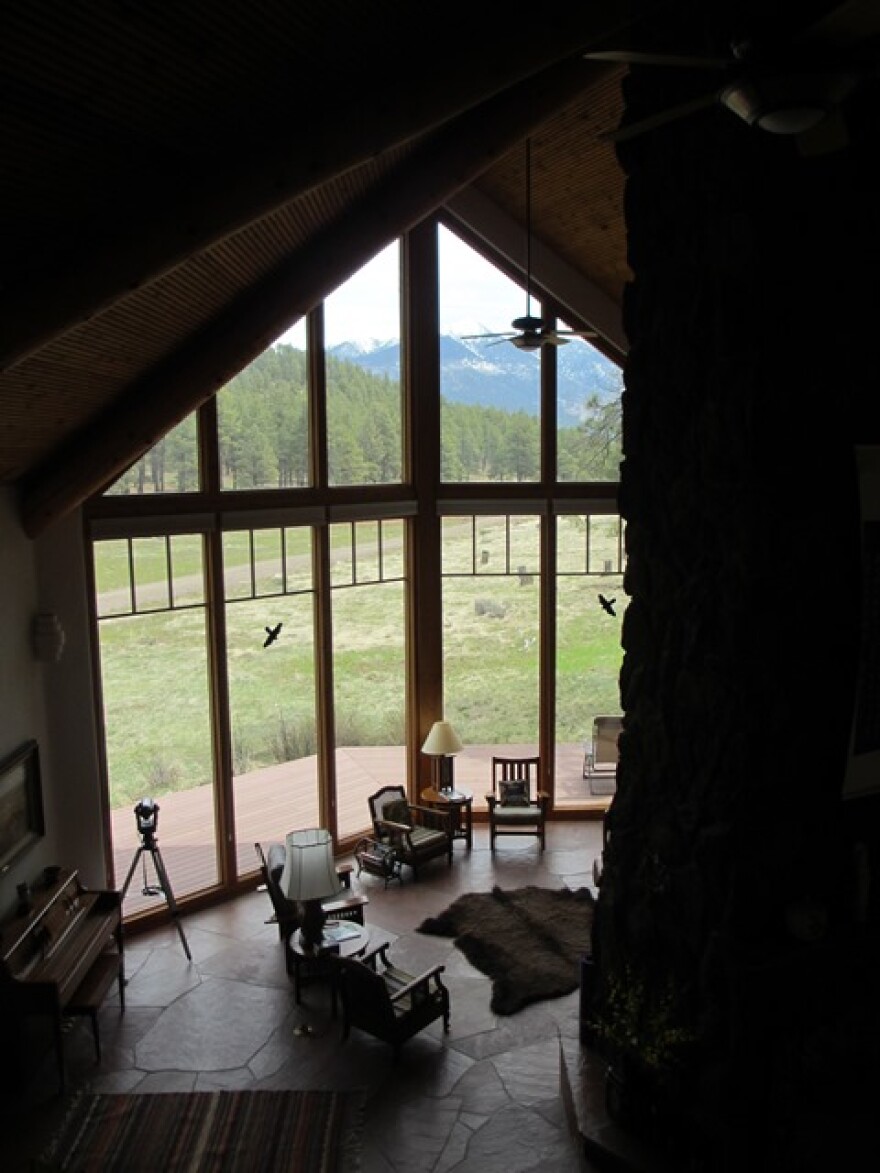Chilly winters and sunny skies make Flagstaff an ideal place for passive solar construction. A house with the right orientation and south-facing windows can collect free energy from the sun—no solar panels required. But one thing stands in the way of Flagstaff becoming a model for passive solar home design: the beauty of a mountain.
Ron Hubert always dreamed of a house with a view. Specifically, this view: the San Francisco Peaks. “They get the early sunrise in the morning so they’re colored when the rest of the sky is still dark,” he says. “They’re frequently gold or purple colored, so it’s a never-ending feast of color and shape.”
When it came time to design his home on the outskirts of Baderville, a neighborhood at the base of the Peaks, Hubert wanted a sustainable design. So he hired contractor Ed Dunn, who specializes in passive solar.
“Passive solar works,” Dunn says. “It’s drop-dead simple. To me it was the only way to build a house.”
Dunn says if you orient a house with its long side facing south, windows will collect sunlight all winter long. In the summer, when the sun tracks higher in the sky, overhanging eaves keep the house cool and shady.

The problem is the San Francisco Peaks rise on the north side of Baderville. Going passive solar meant Hubert would have to give up his mountain view—or at least look at it through much smaller windows. He wouldn’t, though he did build a sustainable home in many other ways.
It’s not the first time Ed Dunn has faced this dilemma. “I have actually suggested to clients that we move the mountain to the other side of town,” he said.
Of course it’s easier—and cheaper—to just give up the view. That’s what Eric Brown did.

“When I really want to enjoy the Peaks, and the beauty of the Peaks, I simply step outside,” Brown says. Brown is one of very few Baderville homeowners who was willing to sacrifice large Peaks-view windows for passive solar sustainability. Even Brown’s chicken coop is heated by the sun.
“Chickens won’t produce eggs if they are cold,” Brown says, “so I figured, well, we’ll try to make them nice and warm by giving them the same passive solar elements that we enjoy in our house.”

One of those elements is a long row of south-facing windows that capture sunlight so effectively, Brown’s family doesn’t use any propane for heating, even when the temperature drops to thirty below. He says the savings and energy efficiency are well-worth the trade-off. “I almost don’t want to talk about how much money I don’t spend on propane costs and firewood costs because our house is heated naturally,” he says.

Flagstaff general contractor Jeff Knorr believes nearly everyone in Baderville could be saving a lot of money if they went with passive solar design. But, he understands a homeowner’s desire to enjoy one of the most spectacular views in town.
“What we see is the trend of people moving toward being willing to do more things to make their home more energy efficient,” Knorr says, “but when the rubber hits the road, I think the view of the mountain wins the battle.”








